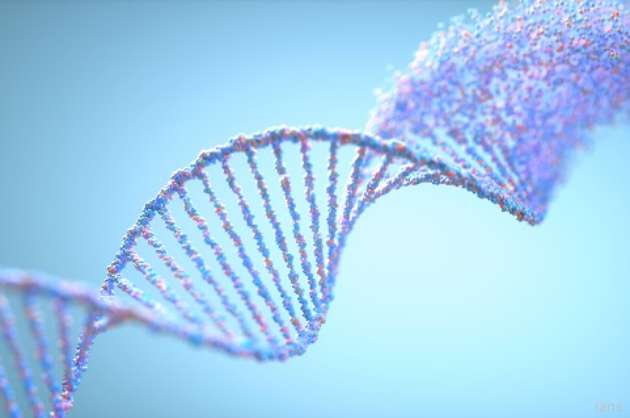Anupama Nair
www.mediaeyenews.com
Is our evolutionary history written into our ‘genome’? What is a genome? “The genome is an organism’s complete set of genetic instructions. Each genome contains all of the information needed to build that organism and allow it to grow and develop”. The human genome looks the way it does because of all the genetic changes that had affected our ancestors. The exact origin of the modern humans has long been a matter of research.
Homo sapiens, is the species that we are, and it in Latin it means ‘wise man’. Our species is the only surviving species of the genus Homo, however, where we came from has been a topic of much debate. Historically, two key models have been put forward by scientists to explain the evolution of humans — the ‘out of Africa’ model and the ‘multi-regional’ model. The ‘out of Africa’ model is now the most widely accepted model and it believes that Homo sapiens evolved in Africa before migrating across the other regions of the world.
On the other hand, the ‘multi-regional’ model stated that the evolution of Homo sapiens took place in a number of places over a period of time. The inter-mingling of the various populations eventually led to the single human species that we see today. Although, studies of the genomes of the extinct Hominids discovered in the Subcontinent, Neanderthals and Denisovans suggested that there was some mixing of genomes with humans in Europe and Asia. This inter-breeding between two previously separated populations is called ‘admixture’ and results in a mixing of genes between the populations of different continents. Genetic studies tend to support the ‘out of Africa’ model. The highest levels of genetic variation in humans are found in Africa. There is more genetic diversity in Africa compared with the rest of the world put together. In addition, the origin of modern DNA in the mitochondria which is the ‘powerhouses’ of our cells has been tracked back to just one African woman who lived between 50,000 and 500,000 years ago and was called the ‘Mitochondrial Eve'.
Our genomes are a combination of DNA from both our parents. However, mitochondrial DNA or mtDNA comes solely from our mother. This is because the female egg contains large amounts of mitochondrial DNA, whereas the male sperm contains just a tiny amount. The sperm use their small amount of mitochondria to power their race to their egg before fertilization. Once a sperm merges with an egg, all the sperm mitochondria are destroyed. As a result, mitochondrial DNA is described as being matrilineal i.e., only the mother’s side survives from generation to generation. Hence, mitochondrial DNA is almost exactly the same as your mother’s and her mother’s. Mitochondrial DNA has been extensively used by evolutionary biologists, as it is easier to extract than DNA found in the nucleus and there are many copies to work with. However, Mitochondrial Eve wasn’t the first or only woman on Earth at that time. She was simply the theme from which all modern generations of humans appear to have grown. Evolutionary biologists think the most likely reason for this is that an evolutionary ‘bottleneck’ occurred during the time Eve was alive. This is when the majority of a species suddenly died out, perhaps due to a sudden catastrophe, bringing it to the brink of extinction. If Mitochondrial Eve was one of the few women to survive then this could explain why her ‘matrilineal’ mitochondrial DNA ended up being passed along so many generations.
Similarly, DNA from the Y chromosome is only passed on from fathers to sons and a evolutionary tree relating all present day male individuals also supports the ‘out of Africa’ model. Further evidence for the ‘out of Africa’ model can be found in the size of human skulls. After studying the genetics and skull measurements of 53 human s across the world, scientists found that as you move further away from Africa, populations are less varied in their genetic makeup. This may be due to human population becoming smaller as they spread out from their original settlements in Africa and so genetic diversity within these populations was less. As a result, the scientists stated that modern humans could not have emerged in different places, but instead had to have come from one region, Africa.
The oldest known remains of anatomically modern humans are the Omo I and Omo II skulls. These were found in 1967 in Omo National Park in south-western Ethiopia. The skulls have been dated to 195,000 years ago, highlighting how humans have evolved relatively recently. Evidence shows that the first wave of humans to move out of Africa did not have too much success while traveling. The eruption of a super volcano, Mount Toba, in Sumatra 70,000 years ago may have led to a 'nuclear winter', followed by a 1,000-year ice age. This sort of event would have put immense pressure on humans. It may be that humans were only able to survive these extreme conditions helping each other. This may have led to the formation of close family groups or tribes and the development of some of the modern human behaviours we are familiar with today, such as co-operation.
Neanderthals are an extinct species of human that was widely distributed in ice-age Europe and Western Asia between 250,000 and 28,000 years ago. They were characterized as having a receding forehead and prominent brow ridges. In 1856 the first Neanderthal fossil was discovered in the Neander Valley near Düsseldorf in Germany. Since then, researchers have been working hard to uncover the position of Neanderthals in modern human evolution. They appeared in Europe about 250,000 years ago and spread into the Near East and Central Asia. They disappeared from the fossil record about 28,000 years ago. Initial studies of DNA from the mitochondria of Neanderthals showed that their mitochondrial DNA looks quite different to that of modern humans, suggesting that they did not inter-breed.
In 2010, scientists from Germany and the USA sequenced the DNA of an entire Neanderthal genome. They also identified another archaic human group called 'Denisovan', named after the Siberian cave in which the fossil finger, from which the DNA was obtained, was discovered. In 2013 they obtained a more refined Neanderthal genome sequence from a 50,000-year-old Neanderthal toe bone, found in the same cave in southern Siberia. DNA can survive in bone long after an animal dies. Over time the DNA from various microbes that encounter the skeleton will also invade the bone. As a result, the DNA can be contaminated with microbe DNA. Scientists therefore have to ensure that they sequence only the Neanderthal genome and get rid of any DNA material left behind by these microbes or resulting from contamination by modern humans who handle these bones. As with the human genome sequence, the Denisovan and Neanderthal genome sequences were made available online for free. Some Neanderthal DNA resembles DNA from people of European and Asian origin but these similarities are not seen in African DNA. This suggests that modern humans evolved in Africa and then expanded out into Asia and Europe, where Neanderthals lived.
Even today many of us carry a small fraction of DNA from our archaic Neanderthal and Denisovan ancestors. This shared DNA could have shaped our individual susceptibility to modern-day diseases or adaptation to new environments and climates. Scientists have found nine Neanderthal genes in living humans known to be associated with susceptibility to conditions such as type 2 diabetes, lupus and Crohn’s disease. It has also been shown that high-altitude adaptation in Tibetans may be a consequence of archaic Denisovan DNA sequence in a region of DNA associated with hemoglobin concentration at high altitudes. Additional research is being carried out to investigate these links further.
Hope things are made clearer about our origins.




























